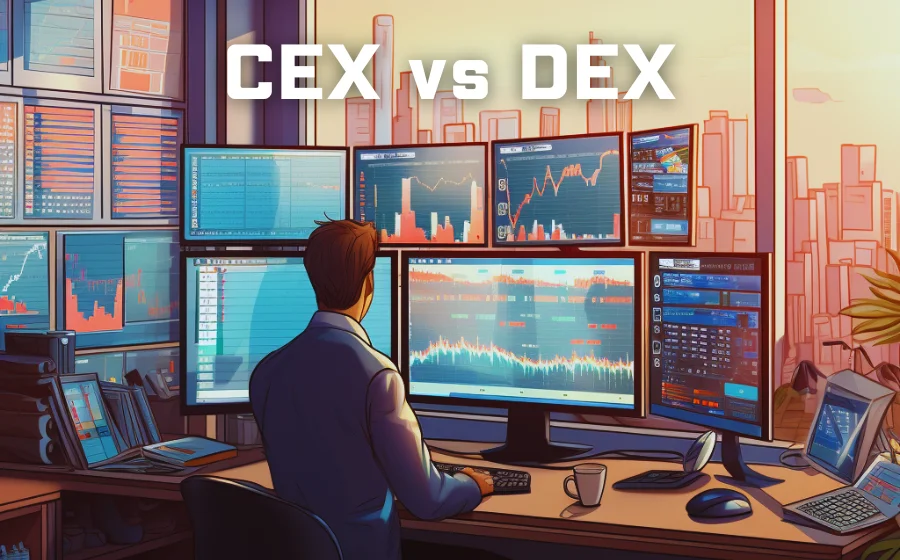
KEYTAKEAWAYS
- Complete Data Control: DID gives users full ownership of their digital identities, eliminating the need for third-party intermediaries.
- Seamless Integration: A single digital wallet enables cross-platform access, reflecting user reputation and preferences efficiently.
- Future-Proof Security: DID uses blockchain-based DLT for secure, private identity management, addressing privacy, data volume, and regulatory challenges.

CONTENT
Decentralized Identifier (DID) revolutionizes digital identity by ensuring full ownership, secure data integration, and privacy, powered by blockchain for seamless and decentralized verification.
WHAT IS DECENTRALIZED IDENTIFIER (DID)?
In the evolving landscape of Web3, Decentralized Identifier (DID) plays a pivotal role by redefining how digital identities are owned and managed.
Unlike traditional, centralized identity systems that rely on third-party intermediaries, DID offers a decentralized identity framework where individuals and organizations have full ownership, control, and management over their digital identities.
This approach eliminates the need for centralized authorities, ensuring that users hold complete autonomy over their personal data and credentials.
The core purpose of DID is to empower internet users by returning identity control to their hands. It allows users to generate unique identifiers through trusted systems of their choice.
These identifiers are authenticated using cryptographic proofs, such as digital signatures, providing robust security and privacy.
Moreover, with the integration of blockchain-based distributed ledger technology (DLT), DID facilitates secure, peer-to-peer data exchanges without the risk of centralized points of failure.
This not only strengthens user privacy but also opens up new possibilities for interoperability across multiple platforms in the Web3 ecosystem.
In essence, Decentralized Identifier (DID) marks a significant shift toward a more secure, user-centric internet, where digital identities are truly owned by their rightful holders.
>>> More to read: What is KYC in Crypto & Why Does It Matter?
HOW DECENTRALIZED IDENTIFIER (DID) WORK
In the Decentralized Identifier (DID) framework, users can securely store various acceptable identifiers, such as government-issued certificates, educational and tax documents, and other personal identifiable information (PII), in a digital wallet.
Unlike traditional identity systems that rely on centralized authorities, DID uses blockchain-based distributed ledger technology (DLT) for identity verification.
The framework does not depend on centralized institutions to manage user identities; instead, it verifies them based on the sources of the identifiers stored in the wallet.
It is important to note that the identifiers themselves are not stored on the blockchain but are entirely managed by the user within their digital wallet.
This architecture allows users to selectively share specific parts of their identity with various services based on their needs.
Whether it is proving age, educational background, or tax information, users can flexibly control the scope of identity data they share while maintaining privacy.
Through Decentralized Identifier (DID), digital identity management becomes more secure, private, and decentralized, truly giving users complete control over their digital identities.
>>> More to read: How to Complete KYC on Pi Network | A Comprehensive Guide
DECENTRALIZED IDENTIFIER (DID) ADVANTAGES & CHALLENGES
📌 Advantages
- Data Ownership
- Users have full control over their data, including transaction records, owned NFTs, and personal identifiers.
- No centralized third party is involved, ensuring complete data sovereignty.
- Without explicit user authorization, no individual or organization can access personal information
- Data Integration
- In Web2, multiple accounts and passwords were required for different platforms.
- In Web3, a single wallet enables access to various platforms and websites.
-
Increased user interaction generates more data, which helps:
- ✅Reflect personal reputation systems
- ✅Identify risk preferences
- ✅Assess creditworthiness and other behavioral characteristics
⚠️ Challenges
- Privacy vs. Transparency
- Although data belongs to the user, blockchain’s public nature can expose wallet activities.
- Influencers (KOLs) are often tracked, with every transaction monitored.
-
For everyday users, visibility of assets and activities can:
- ✅Pose security risks
- ✅Lead to personal safety concerns
- ✅Result in public scrutiny and moral judgment
- While creating new wallets can partially mitigate this, large transactions still attract attention.
- Massive Data Volume
- Blockchain’s immutability and permanence cause data to accumulate over time.
-
Large, mixed datasets make it difficult to:
- ✅Filter valuable information
- ✅Extract actionable insights for companies seeking to leverage user data
- Regulatory Uncertainty
- Rapid technological advancements often outpace legal frameworks.
-
The lack of clear regulations may hinder:
- ✅Adoption of DID solutions
- ✅Compliance in industries where data protection is critical
Decentralized Identifier (DID) offers a secure, private, and user-centric solution for digital identity management.
However, its full potential can only be realized by addressing privacy concerns, managing vast data volumes effectively, and establishing clear regulatory frameworks.
>>> More to read: Crypto Risks 101 | A Beginner’s Guide
DECENTRALIZED IDENTIFIER (DID) FUTURE DEVELOPMENT
✅ Aggregation Management of Digital Identities
In the future, Decentralized Identifier (DID) will play a crucial role in the aggregation management of digital or virtual identities.
As individuals manage multiple accounts across various social media platforms and digital services, efficient aggregation becomes essential.
A robust digital identity wallet will enable seamless integration with different services, allowing users to access multiple functions through a single identity system.
This could include logging into email accounts, clocking in at work, or even withdrawing cash from ATMs—all through a unified and versatile verification service.
✅ Cross-Identity Verification
Another key development area is cross-identity verification. Once digital identity facts are aggregated, users can leverage verified credentials for fast and secure authentication across multiple services.
For example, attending a real-name registration concert may no longer require a national ID card. Instead, an authenticated bank credit card or a KYC-verified membership card could serve as valid proof of identity.
This would simplify complex verification processes while enhancing flexibility and security.
🚀 Conclusion
Decentralized Identifier (DID) is set to revolutionize digital identity management and verification.
As aggregation management and cross-identity verification technologies mature, users will benefit from a more secure, efficient, and consistent way to manage and utilize their identities across diverse digital services—ushering in a new era of digital experiences in the Web3 landscape.


















